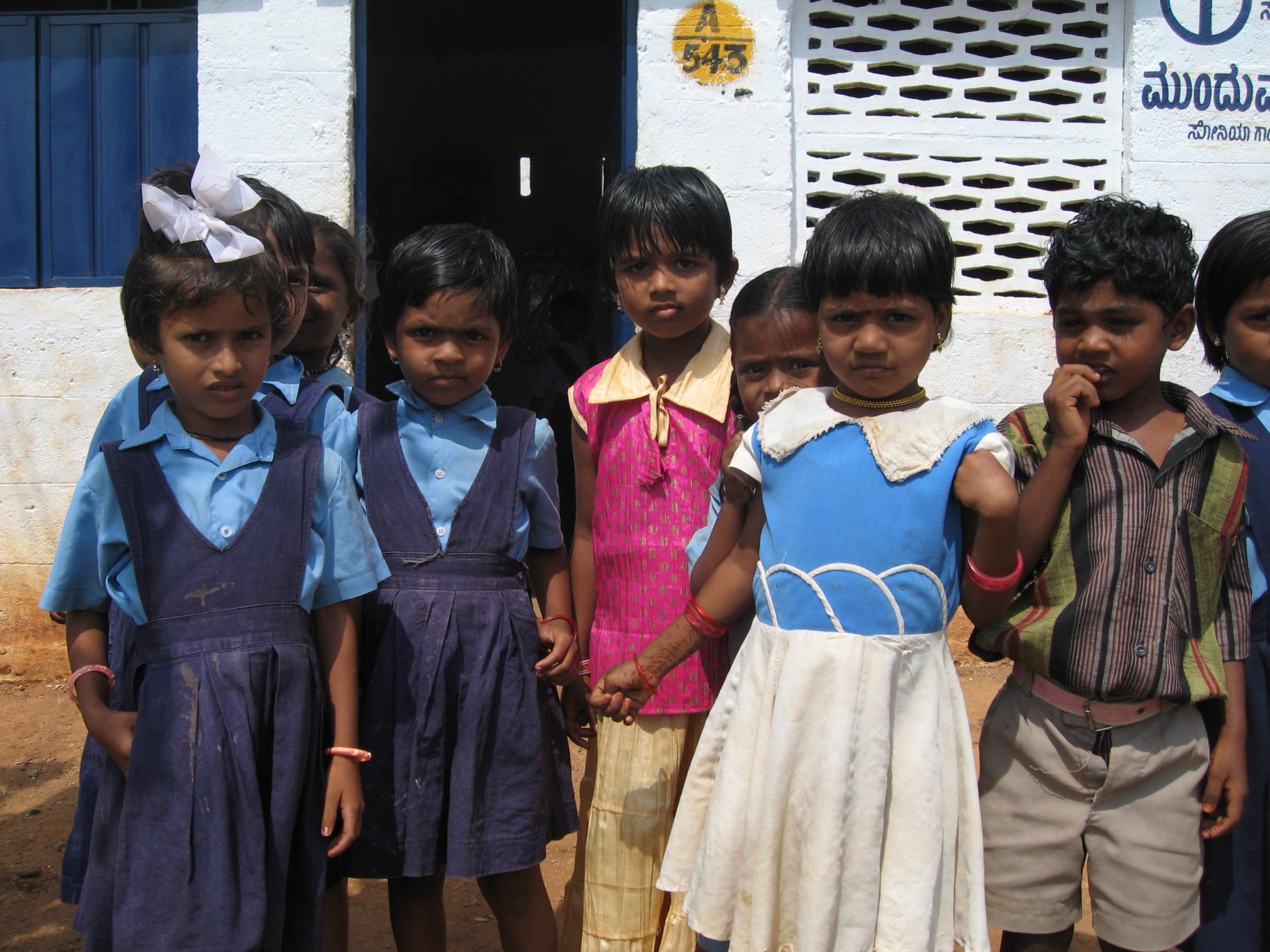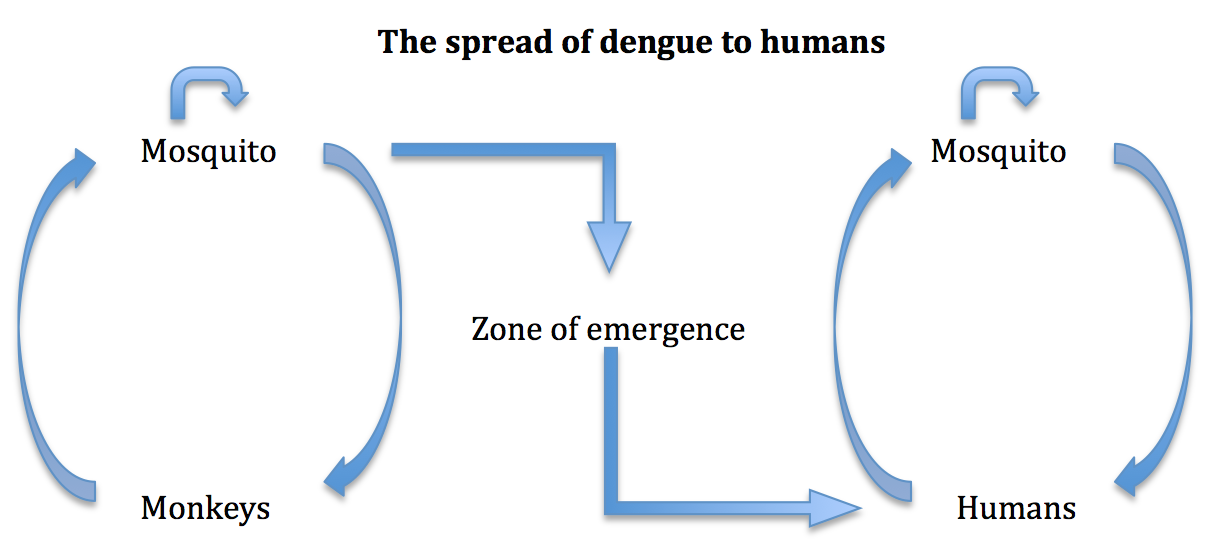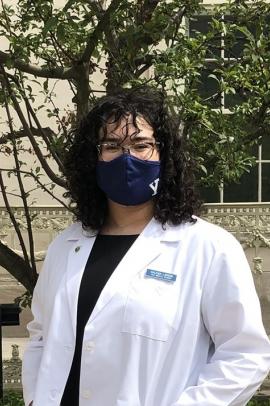Dengue in India: The importance of child education

1. Introduction
Dengue is an important mosquito-borne viral disease and constitutes a major public health concern throughout tropical and subtropical regions. Its global incidence has increased 30-fold in the past half century and the World Health Organisation (WHO) estimates that there are up to 100 million new infections annually, with 40% of the world’s population at risk [1]. Despite these concerning figures and the socioeconomic disruption it causes, dengue remains a neglected tropical disease (NTD).
There is currently no effective dengue treatment or vaccine, highlighting the importance of prevention measures in controlling dengue infections.
The policies suggested seek to provide more effective, sustainable educational resources and infrastructure. While the focus here is India, the policies and schemes discussed will hopefully be of relevance to other countries where dengue has become a public health concern.
1.1 Transmission
A simplified schematic of the cycle of dengue spread is shown below:

Figure 1. Adapted from: Nikos Vasilakis, Jane Cardosa, Kathryn A. Hanley, Edward C. Holmes & Scott C. Weaver (2011) Fever from the forest: prospects for the continued emergence of sylvatic dengue virus and its impact on public health. Nature Reviews Microbiology 9, 532-541
Spread of dengue is predominantly via the human-mosquito-human pathway. Less commonly, expansion of urban areas (zone of emergence) into surrounding tropical regions brings humans into contact with mosquitoes in the sylvatic (wild animal) cycle, allowing infection of humans from infected animals
1.2 The Vector
The female Aedes aegypti mosquito is the primary vector of the dengue virus. Unlike other mosquitoes (such as the Anopheles genus, several of which transmit malaria) Aedes aegypti is a daytime feeder; its peak biting periods are early in the morning and in the evening before dusk. Female Aedes aegypti bites multiple people during each feeding period, increasing the likelihood of viral transmission.
1.3 Dengue in India
India is endemic for dengue infection and in 2013 witnessed its most severe dengue outbreak in six years with 55,063 cases reported as of October 28th 2013 [2]. Around 75% of the global population vulnerable to dengue infection are in the Asia-Pacific region [1]. Worldwide there has been a steady increase in the number of countries reporting dengue outbreaks; local transmission of the disease was reported in France and Croatia in 2010, while an outbreak in 2012 resulted in 2000 cases of infection Portugal [3].
According to the World Bank, 32% of India’s population lives in urban areas [4]. This is significant, as dengue outbreaks arise predominantly in urban and semiurban areas where people live in close quarters and mosquito control is inadequate. A high population density and standing pools of water (breeding grounds for mosquito larvae) can exacerbate the problem, accelerating transmission. In India, the latter is particularly important because water is often stored in tanks and irregular waste collections creates microenvironments for water stagnancy [5].
In recent times, there has been a trend for urban populations to move into high rise flats [6]. This move has serious implications for dengue fever, involving a large number of people, mainly from the slums. One Indian property developing company, Omkar, has completed 12 projects, rehousing 40,000 slum dwellers into flats. It has 12 more projects planned for some of the 6.5 million people still in Mumbai’s slums [7]. The high rise exodus has created a new, population-dense, multi-tiered environment conducive to a rapid increase in the Aedes aegypti population and incidence of dengue [8].
Severe dengue (dengue haemorrhagic fever) is a potentially deadly complication of infection and is recognized as a leading cause of death in young children, according WHO [3]. Evidence for children bearing a statistically greater burden of dengue is seen in a study carried out in Tamil Nadu, an Indian state. It was found that in the state of Tamil Nadu, nearly 20% of dengue infections occurred in infants [9].
This finding has been replicated Venezuela, which showed that dengue hemorrhagic fever incidence was highest among infants [10].
2. Child education and participation
Children shoulder a disproportionate amount of the dengue burden and child education fosters an early appreciation of the disease. This aims to increase awareness of prevention methods and equip children with the knowledge to tackle dengue.
2.1 Considerations for school-directed policies
Schools would seem ideal targets for any dengue education schemes; information reaches a large group of children, and stratification by age means that vector education can become more complex and in-depth as children mature. However despite India’s 2009 Right to Education Act, which made schooling free and compulsory for children from age 6 to 14 more than 40 percent of Indian children drop out of school before finishing 8th grade, though this varies across Indian states [11]. Often, those children who cannot attend because they need to work or find it hard to get to school are also those who would most benefit from dengue education (i.e. children from the rural or slum urban areas who more likely have a greater exposure to mosquitoes).
Schools nonetheless do provide an opportunity to reach some children, and policies should aim to maximize the number of children reached. As of 2012, enrolment rates are 58% for pre-primary, 69% for secondary, and 25% for tertiary education [12].
We recommend that education policies focus on primary schools as they have the highest attendance.
2.2 Teaching Dengue Awareness: Local Representatives and Older Students
Once an educational program has been developed, it could be taught by teachers, but the high rates of teacher absenteeism mean that a local representative could be elected to come and teach about dengue (in place of teachers) [13]. If the representative is someone with a vested interest in the children’s health (a local nurse or a parent), it may help tackle the problem of absenteeism, particularly if they only have to come in once a month, for example.
We recommend school governing bodies, in co-operation with parents and local health care facilities, elect local nurses or parents to act as dengue representatives.
The role of these representatives would be to spread knowledge through face to face communication and direct teaching.
These representatives should initially be trained by public health professionals or healthcare workers, but subsequent representatives should be trained by existing representatives (cascade training). Moreover in schools older students can later be involved in teaching.
Funding for training of the first set of representatives in each area should be provided via NGOs such as the Global Dengue Foundation, UNICEF, WHO and by local government. Social duty is ideal motivation, but if there is difficulty finding representatives with this, payment for services could be provided by the above organisations [14].
An additional benefit of a representative is that a trained local could educate children in their local community, outside school for those children who do not attend.
Motivation of community representatives, and the benefits they offer, is discussed in more detail in the parallel paper by Polygeia: Community Empowerment & Infrastructure: integrating the fight against NTDs
2.3 Teaching Methods
A simple pre-teaching survey should be carried out which highlights gaps in students’ knowledge about dengue, which can then be addressed for more effective learning.
Dengue ‘classes’ should be carried out during the morning exercise/yoga classes or assemblies in outbreak areas, since it may be difficult to fit dengue into an already full school curriculum of core subjects.
Classes could also be designed for break times, and could take the form of active games/plays/question and answer sessions as outlined below:
It is necessary to involve the children’s ideas in the teaching to tackle misconceptions and using an active teaching style engaging to children. A study in Brazil looked at various ways of teaching children about schistosomiasis transmission [15]. The ‘social representation’ approach promotes teaching using children who have already suffered the disease and utilizes children’s ideas in teaching. For example looking at the children’s previous idea of transmission through polluted water only by, for instance, having students identify in a microscope the cercaria (parasite) in a container with apparently clean water. Compared with the standard method of providing information and guidelines for prevention, the social representation method group showed a significant increase in knowledge in post-teaching questionnaires. Such a method could be easily adapted for dengue, for example by showing Aedes aegypti larvae in clean as well as dirty water to combat the belief that Aedes aegypti larvae are only found in dirty water. Interactive teaching methods such as having children circling on a picture of a house/street where mosquito could breed, could also help retention.
Teaching should follow the social representation model to maximize student engagement.
WHO developed a comic involving a relatable children’s book character, Bambo to help teaching about schistosomiasis. This type of resource can also be taken home and used to inform the rest of the family, as part of social diffusion of information [16].
We recommend that the World Health Organisation produce a children’s book focusing on dengue, and on ways to prevent mosquito bites. This could focus on the avoidance of painful bites as well as the effects of the disease.
We recommend that all teaching resources should be produced as a collaboration between teachers, public health advisers, healthcare workers and the children themselves. Input from the Indian Council of Medical Research may also provide vital information for teaching.
2.4 Evaluation and Social Diffusion
A representative can re-evaluate the children’s knowledge at intervals, checking the children’s progress through school to encourage long term uptake and retention of information.
Ovitraps are devices which allow mosquitoes to lay eggs in them, but the eggs are then trapped, allowing mosquito population to be estimated [17].
We recommend teaching of the use of ovitraps to representatives to help measure the mosquito burden. They should be provided by the World Health Organisation, the government and through funding by UNICEF, potentially. Ovitraps can be used before and after measures are put in place to track increases/decreases in mosquito levels. Ovitraps can also be used in areas where representatives are not introduced, as a control to show that any decrease in mosquito burden is due to teaching of vector control by the representatives.
2.5 Encouraging child participation
In one school in the Philippines, a ‘Dengue Brigade’ of students was selected to disseminate information about dengue to other students [18]. The students teach others about how to identify the mosquito larvae, how to prevent their growth spread, the importance of long sleeve clothing to stop bites and more (this peer teaching could happen during lunch breaks/during morning assembly). The brigade is run by the Municipal Health Office, and students take oaths into their role reinforcing the importance of the undertaking. It encourages them to carry out their role seriously and to the best of their ability. Such initiatives empower children and keep them at the heart of vector control education, making the success of the scheme more likely.
We recommend the establishment of a pilot dengue brigade system, by an NGO such as UNICEF, in 10 schools in Tamil Nadu which recorded over 25% of India’s dengue cases in 2012 [19]. Thorough evaluation through questionnaires for both children and local communities should be used to measure information retention and knowledge transfer between children and local communities. Dengue Brigade, as a local initiative, would be best overseen by the local government.
We recommend the results of these surveys be used by the dengue research arm of the Indian Council of Medical Research to assess the usefulness and feasibility of programme expansion.
h2. Increasing the penetrance and impact of policies in local communities
Awareness schemes need to focus on the aspect of the mosquito that most worries people. An example of this was seen in a malaria reduction study in Guatemala [20]. Most residents in the study area recognised the role of mosquitoes in malaria transmission, but few knew how mosquitoes acquired their infections or understood the risk of having an untreated person in their midst.
We suggest a similar approach should be taken in India, dengue should be publicized more as a disease with no cure or vaccine, to raise awareness of the danger of being around untreated individuals, to encourage people to take preventative measures.
Although most informants in the study believed that bed nets help protect against malaria, the major reason for using them was to prevent nuisance mosquito bites. Thus, schemes might be more successful if their capacity to reduce the numbers of nuisance mosquitoes and other pest insects was made clear, rather than focusing solely on disease prevention, which most informants believed was less important. This study emphasizes the importance of understanding community beliefs and practices when planning or evaluating vector control activities; this can then be used to tailor suitable teaching aids and resources to be used in educating children, by teaching them how to reduce the number of annoying mosquitoes. While the study above looked specifically at malaria and not dengue painful bites may still be people’s primary concern.
We recommend household level surveys be done prior to implementation of any dengue awareness program in order to understand major community worries relating to mosquitos. If there are non-dengue related worries these should also be the focus of any subsequent campaign.
As well as policies to improve dengue education through schools and the community, it may be effective to implement schemes that focus on mothers as a means of reaching children.
Community dengue representatives should visit maternity wards to inform new parents about dengue prevention and control to protect their baby.
We propose dengue representatives visiting local communities should run weekly sessions aimed specifically at mothers. These should focus on helping reduce the presence of problem mosquitos through practical techniques such as the use of bed nets and the covering of water tanks.
Local health authorities would be well placed to establish and oversee this scheme.
4. Policy Summaries
- We recommend the training of local representatives, nurses or parents to teach dengue avoidance techniques in primary schools. These representatives should teach locally in their community to help because of high rates of absenteeism.
- Teachers/ selected local dengue representatives in the community should publicize dengue to children as a disease with no cure or vaccine to increase behavioral uptake in preventative measures. It should also focus on the avoidance of nuisance mosquito bites if this is a more immediate concern for the children than future infection with dengue.
- Teaching material should be created based on preliminary surveys to ascertain where there are knowledge gaps about dengue for the children. Funding should come from relevant charities such as the Global Dengue Foundation and UNICEF.
- Teaching must be active such as showing children what larvae look like and how they can grow in clean as well as dirty water to dispel misconceptions.
- Resources such as comics and games should be produced as a collaboration between teachers, public health advisers, healthcare workers and the children themselves. Input from the Indian Council of Medical Research may also provide vital, relevant information for teaching.
- A pilot ‘Dengue Brigade’ scheme should be established in Tamil Nadu to empower children to take a more active role. Dengue Brigade, as a local initiative, would best be overseen by the local government.
- Success of schemes should be thoroughly evaluated, an evaluation method should be established prior to implementation and should include surveys of children and parents, as well as estimation of mosquito number using ovitraps.
- As part of efforts to protect children from dengue, policies enforcing change in the home should directed towards women. As an extension of this, the dangers of dengue to children must be highlighted to parents to increase effectiveness of schemes.
Conflicts of interest
There are no conflicts of interests to declare.
References
[1] WHO global strategy for dengue prevention and control 2012-2020. Available from: http://apps.who.int/iris/bitstream/10665/75303/1/9789241504034_eng.pdf
[2] Times of India 2013 outbreak article. Available from: http://timesofindia.indiatimes.com/india/Dengue-outbreak-of-2013-worst-i…
[3] WHO Dengue factsheet. Available from: http://www.who.int/mediacentre/factsheets/fs117/en/
[4] India urban population. Available from: http://data.worldbank.org/indicator/SP.URB.TOTL.IN.ZS/
[5] Water stagnancy and dengue. Available from: http://www.thenational.ae/news/world/south-asia/india-faces-upsurge-in-d…
[6] Increase in high rise flats. Available from: http://www.ft.com/cms/s/0/5c32fda8-cf06-11df-9be2-00144feab49a.html
[7] Omkar and numbers moving into high rise flats. Available from: http://www.businessweek.com/articles/2014-08-28/in-india-slum-dwellers-m…
[8] Flats and dengue. Available from: http://www.msptm.org/files/662_-_667_Wan-Norafikah_O.pdf
[9] High incidence of dengue in children. Available from: http://www.ncbi.nlm.nih.gov/pmc/articles/PMC179846/
[10] Dengue affecting children in Venezuela. Available from: http://www.ncbi.nlm.nih.gov/pubmed/20065008/
[11] India school drop out rates. Available from: http://www.hrw.org/news/2014/04/22/qa-talking-discrimination-and-school-…
[12] School attendance rates in India. Available from: http://wdi.worldbank.org/table/2.11
[13] Teacher absenteeism. Available from: http://blogs.worldbank.org/education/hidden-cost-corruption-teacher-abse…
[14] Polygeia Community Empowerment paper
[15] Brazil schistosomiasis education study. Available from: http://memorias.ioc.fiocruz.br/issues/past-issues/item/1135-the-impact-o…
[16] Bambo has bilharzia. Available from: http://apps.who.int/iris/bitstream/10665/44636/1/9789241501903_eng.pdf
[17] Ovitrap mechanism of action. Available from: http://www.nature.com/scitable/content/ovitrap-22404316
[18] Carmona Dengue Brigade. Available from: http://carmonagov.net/home/latest-news/668-75-studes-swear-as-anti-dengu…
[19] Incidence of dengue across Indian states. Available from: http://knoema.com/kjrziic/state-wise-dengue-cases-and-deaths-in-india-2012
[20] Guatemala study. Available from: http://www.ncbi.nlm.nih.gov/pubmed/7771601
Article photo credit: Yorick_R
- Log in to post comments










